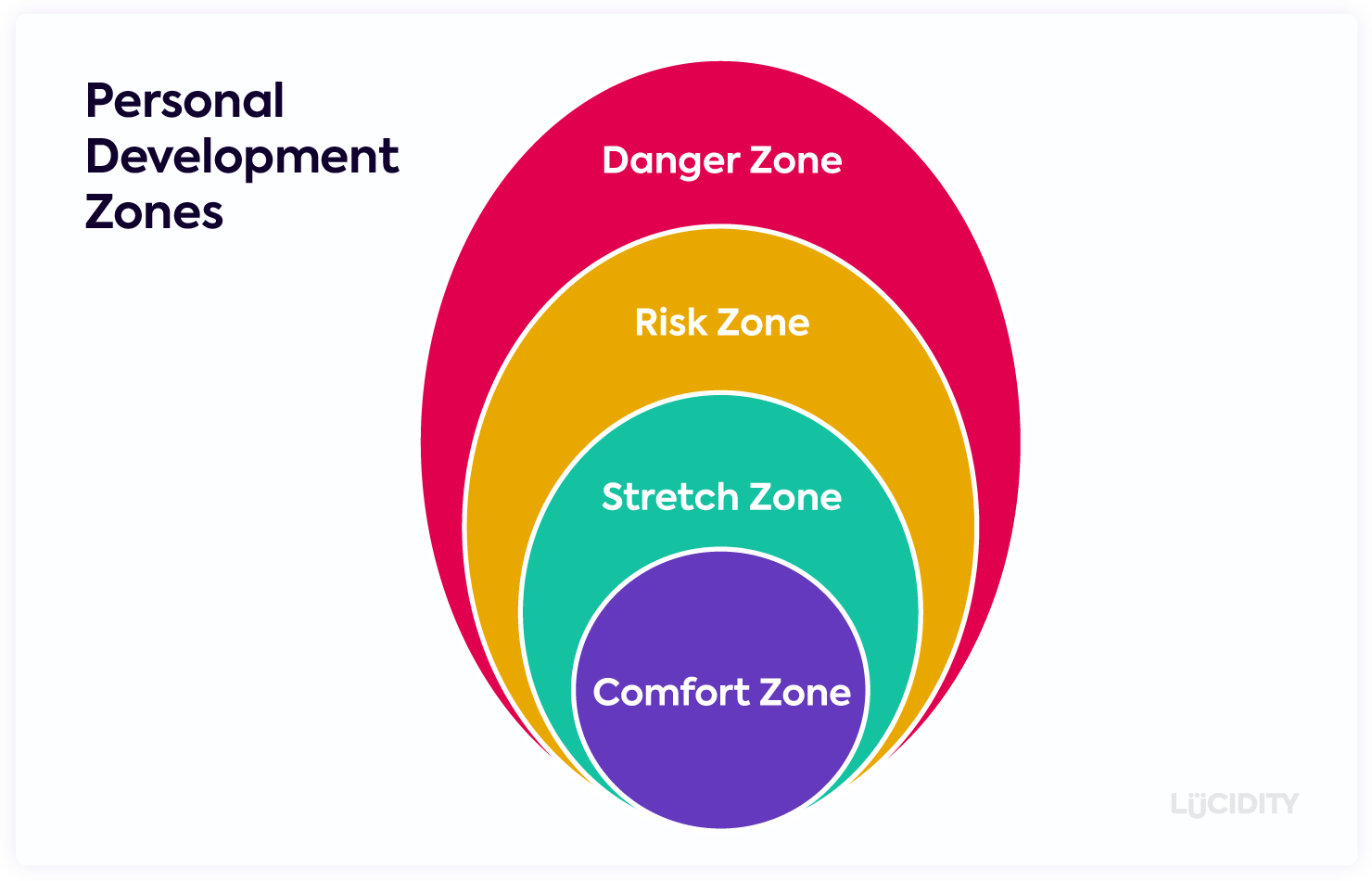Hugh Varilly, a consultant and former Visiting Professor in the UCL Department of Computer Science and School of Management, spent 40 years as a systems engineer within one of the world’s biggest blue-chip IT companies. As one of the organization’s most prominent leaders he was part of a Technical Leadership Team responsible for developing up-and-coming technical leaders within the business. Along with the rest of the team he developed and delivered a programme of leadership learning and development which included masterclasses, training guides and a series of keynote talks. His popular presentation on Becoming a Technical Leader was a cornerstone of this leadership programme and has been watched by thousands of people across the globe.
Here Hugh outlines the leadership development advice from that keynote talk.
Developing the Right Skills
If you want to become a better, more effective leader, or have ambitions to move into a leadership role, you will need to understand what skills you currently have, how they can be enhanced, and what skills you’ll need to development for the first time. You should think of these in three dimensions
1. Technical Skills
Often leadership comes with the expectation that you are an expert in your particular function – not always, but often. If this is the case for you, you need to ensure you maintain these skills. For example, if you’re technical skills are in computer programming or systems analysis, you will need to keep up with changes in technology. If you are a subject matter expert in a technical area, you need to grow your skills, maintain them by keeping up to date, but realise that they will decay as the technology is superseded. You may well have to start over with the new technology.
2. Personal Skills
These include negotiation, written and spoken communications, mentoring and coaching and team leadership.
3. Professional Skills
These will include techniques and methods such as project management, problem analysis, consultancy.
Be ‘T-Shaped’
In terms of skills, we talk of the ‘T-Shaped’ person, who combines depth in a number of areas of expertise with broad experience across the range. Depth comes from having deep knowledge of a few relevant topics, being connected to the ‘leading edge’ and participating in ‘networks’ in the topics’ communities.
Breadth is built from having a range of differing experiences, having the ability to see the ‘big picture’, keeping up-to-date across relevant topics through reading, blogs, webinars etc. People who think broadly understand how to learn and how to filter facts and are aware of which business and commercial considerations to take into account, learn and apply lessons from their experience, have good personal networks, and are often sought out for their opinions.
Get Out of Your Comfort Zone
We need to operate out of our ‘comfort zone’ to improve our skills and capability. It’s useful to think in terms of four distinct zones of comfort…
- Comfort Zone – this is where you’re comfortable and coasting and not being stretched. Challenge yourself! Get out of there!
- Stretch Zone – this is obviously where you’re being stretched and may feel a bit uncomfortable, but you’re developing skills and capability. Aim to be here the majority of the time
- Risk Zone – you’re beyond being stretched here and are at risk of failure, embarrassment. You need the right equipment to operate here
- Danger Zone – you’re well out of your depth. Don’t go there! Learn to recognize if you are there, and how to get back into a safer zone.
Over time, as you grow, your zones will move – what was once in the risk zone will meld into the stretch zone. That’s how you grow.
The Characteristics of a Good Leader
Over the years, through observations of many leaders, these are the attributes I perceived in the most successful of the bunch. For me, this constitutes the ideal development list for any business leader. Use it to assess your own leadership skills and decide the areas that you’ll focus on to improve.
Breadth as well as depth
See the discussion above. Psychologically it may be hard to be both broad and deep; broad is necessary in a leader.
Adaptability
A leader needs to be adaptable to changing situations. Things happen that you will not have anticipated, possibly as a result of external events over which you have no control, and you need to be resilient and adapt to the changed circumstances.
Decisiveness
A leader is decisive. There are three types of decisions – the correct decision, the wrong decision and no decision. It is better to make a wrong decision than no decision. Good leaders mostly make correct decisions, but rarely always do so. However, timing is important – do not rush into decisions unless you have to. If you wait a little, circumstances may take care of themselves and the need for a decision may disappear.
Optimism
This is part of having a positive outlook. There’s a great TED talk on this subject which is worth a watch. Another aspect of this is being optimistic that, in your network, someone always knows the answers. This ties into the fact that you should aim to build a good network, which we will discuss later.
Curiosity
Be curious about the world about you. Learn the main characteristics of new things; as you increase your depth you won’t have time to learn the detail of everything
Open Mindedness
Be receptive to all inputs; don’t shut yourself off.
Honesty
This will ensure you build trust in colleagues and customers alike. It’s very hard to achieve anything without the trust of your teams and your buyers.
Courage
Forsake the comfort zone; sometimes you need to go where you fear to venture. Speak out; have a position on important matters; don’t be afraid to voice your opinion. Sometimes doing so allows others to speak out. Sometimes you may have to take the blame for your company’s failings from customers, even though you may have no personal involvement.
Modesty
There’s always someone better than you. Colleagues, and often customers, can’t stand an arrogant know-it-all. The exception to modesty is when you’re applying for a new job, promotion, professional qualifications etc. – then you need to big up your positive achievements, without indulging in falsehoods.
Cheerfulness
It takes less effort to smile than to frown; cheerfulness is infectious and will improve the morale of colleagues.
Firmness
Stand up for what you believe, without being obnoxious – unless it is absolutely necessary so to be.
Commitment
Take responsibility. Leaders step up and own problems.
Influence
Influence comes from a sustained track record of delivering results, from the exercise of professional judgement, from trust. The best advice I once got from an entrepreneur – don’t confuse activity with results.
Other Things a Leader Needs
Responsiveness
If someone, asks you to do something, go back to them quickly if you can’t help, say so and try to help by suggesting someone else.
Drive and Persistence
Keeping going, although beware – ambition can be a two edged sword; you can come over as too pushy; remember the fable of the hare and the tortoise.
Learning from Mistakes
Hopefully, mostly other people’s mistakes. Remember the old saying “the man who never made a mistake never made anything”.
Discretion with Customers
Maintain the correct amount of discretion with customers. Don’t wash your company’s dirty linen in public. Don’t argue with colleagues in front of customers, unless absolutely necessary. If a disagreement becomes apparent, take it offline, resolve it with your colleagues and then go back to the customer. However, sometimes you do have to correct a colleague in front of a customer, if they are creating a serious liability for your company.
Personal Network
A good network is essential. The way to build a network is to do people favours; you get them back multiplied. Don’t ask “what’s in it for me”; if you have time help, if you don’t have time, say so and get someone else to help them. I remember being in a meeting in Paris when a director said to me “you may not remember me. When I was a young systems engineer starting out, I used to phone you up and you would help me out”. I’d never met her till that moment, but she was very helpful in that meeting
Sponsorship
People in the business who will support you are necessary for you to get on. Have more than one and beware of being identified too closely with one sponsor in case he or she leaves or crashes and burns. Also avoid being seen as someone’s bag carrier. However, you will notice that leaders tend to work again and again with people who have delivered for them in the past.
Trust
If somebody senior takes the trouble to personally ask you to do something – do it and go back directly and promptly. This is very important.
Visibility
As you climb the leadership ladder, you need to be known by senior people – for the right reasons. Visibility is a two-edged sword – forget the quiet life – once you’re visible, all sorts of people will come to you looking for help.
Teaming
Teams produce better output than individuals – in 99% of cases. You may have to gather a cross-functional team together to tackle hard problems. Teams need empathy, give and take; they also need a catalyst – someone who makes the team function; for example, this may be a junior person who, as well as contributing as a member, also organizes social outings.
Negotiation Skills
The basics of successful negotiation are:
- Have tightly defined objectives, be clear about what you want to achieve
- Build a competent team who know their subjects
- Pay close attention to structure, process and procedure
- Build consensus among your stakeholders and keep them informed and updated, so that there are no surprises
- Separate the people from the problem, focus on the issues not the personalities
- Always agree what has been agreed and document these agreements
- Be aware of the future as well as the present
Root Cause Analysis Skills
Never be satisfied till you have an explanation. An unresolved problem usually comes back; beware complacency, thinking you only have a minor problem; circumstances may change and the minor problem about which you were complacent may erupt into a major one. You need the ability to step back and see the wider picture. Beware – the immediate cause of a problem may not be the root cause.
Ability to Think on Your Feet
This is essential for leaders as they become senior and get more unexpected challenges, but prepare for meetings as well as you can, to reduce the number of unexpected things.
Things to develop
- Self-Awareness – know yourself, so you can minimize faults and maximize strengths; be honest when assessing yourself
- Empowerment – As General Colin Powell said, it’s better to ask for forgiveness than permission – but don’t do it too often, otherwise you will come across as unreliable
- Innovation and Creativity – these can be taught. To paraphrase Henry Ford, they’re hard work, otherwise we’d do more of them. Innovation is about putting existing things together creatively, and also about commercializing the results
- Ability to Prioritise; this is covered in my piece on Time Management.
How to Lead Teams
Academic research and practical experience show that successful teams can usually achieve more than individuals, so it’s important that teams have good leaders. Team leaders can be appointed in a number of ways.
- Management may appoint someone to lead a team
- It may be expected that people with certain organizational roles may lead the team
- A leader may be elected; the team may decide on a leader. Beware – the team may elect the nicest or most assertive person, not the most effective.
- A leader may emerge; somebody may take control – this is usually good, but someone may take on leadership for the wrong reasons – personal ambition etc.
The team may have to depose an ineffective leader. We had a team which had to deliver an event of three days for 250; the leader was ineffective. I pulled the top four contributors together “this is not working; we have to run this ourselves; Ian, you need to lead”. Teams with well-defined objectives can get away (survive) with loose leadership. Teams with loose or fluffy objectives need strong leadership. One of the key things for the leader to do is to tighten the team’s objectives.
A team should have a diversity of personality types. The leader may have to prevent the extroverts monopolizing the conversations and draw out the introverts – see Susan Cain’s TED Talk on Introverts. Brain/mouth correlation can vary widely – some people speak before they think; others vice versa. Look for the catalyst in your team – the person who makes the team work; every good team has one.
Leading a team is more than just task management. You may have to be a lifestyle counsellor. People may bring you their personal problems – treat that as a sign of being a good leader. When things go well, give the credit to the team. When they don’t, take the blame yourself. The team will notice, and appreciate what you’re doing. Exploit each member’s strengths; trust them; almost everyone can contribute well, but you may have to deal with under-performing people.
Communication is vital; it is in danger of becoming a lost art. You must communicate in terms the recipient can understand. Put yourself in the other person’s shoes. Explain technical ideas simply to business persons. Jargon and colloquialisms are useful but only if both parties understand them. Test to see if the other party is on the same page. Understand the difference between spoken, email and written communication. They have different levels of formality; don’t forget that emails are records which can be used in court. A proposal usually must be formal. Don’t hide behind “nothing written down” – beware; a verbal contract can be legally binding.
Get your grammar, spelling and arithmetic right. Sloppy work takes attention away from your message. There’s always somebody who will add up your numbers, so get them right. Get a (literate) colleague to proofread or review your important documents. Avoid the common mistakes – “Its” is a possessive pronoun. “It’s” is short for “It is” The past tense of “to lead” is “led”, not “lead”.
Prepare well for meetings and presentations. The first items on meeting agendas should be easy to agree. Agreement builds co-operation which you will need when you get to the hard part of the agenda. Take account of cultural differences when communicating. A good reference is When Cultures Collide by Richard D Lewis.
Communication is two-way. You have one mouth but two ears. Be an active listener. Make it easy for people to help you. Don’t ask them to struggle to understand what help you need
The easier others find it to help you, the more help you will get. The best bit of advice I got in my career was from my second line manager, years ago: “Sit and listen”. The next best bit was from my daughter: “Get a life, Dad”
My final piece of advice – When in deep trouble, look straight ahead and keep very quiet.
Lead with a clear strategy and the right tools
Book your personal demo and see how we help leaders effectively drive through their strategic plans














